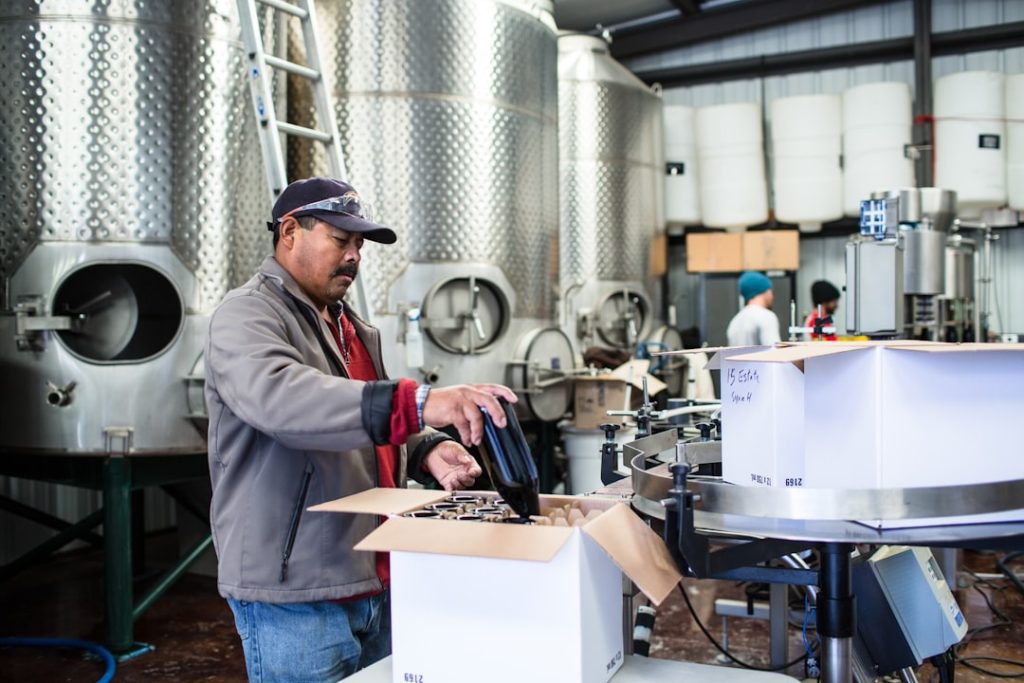Manufacturing companies in Afghanistan are essential to the nation’s economy, contributing to employment, economic expansion, and industrial development. These firms produce a diverse array of goods, including textiles, food and beverages, construction materials, and pharmaceuticals. The manufacturing sector has the potential to significantly enhance Afghanistan’s economic growth and reduce import dependence.
However, the industry faces numerous obstacles that impede its progress and competitiveness. Historically, the manufacturing sector in Afghanistan has encountered challenges such as insufficient infrastructure, limited financial resources, and a shortage of skilled workers. The country’s security situation has also presented considerable risks to manufacturing operations.
Despite these hurdles, opportunities exist for manufacturing companies in Afghanistan to succeed and contribute to the nation’s economic advancement. With appropriate support and investment, the manufacturing sector has the capacity to generate employment, increase exports, and stimulate economic growth in Afghanistan. The development of this sector could play a crucial role in diversifying the country’s economy and improving its overall economic stability.
Key Takeaways
- Manufacturing companies in Afghanistan play a crucial role in the country’s economy, contributing to job creation and economic growth.
- Challenges faced by manufacturing companies in Afghanistan include security concerns, lack of infrastructure, and limited access to finance and skilled labor.
- The government has initiated various programs and policies to support manufacturing companies, including tax incentives, investment promotion, and infrastructure development.
- International organizations such as the World Bank and the Asian Development Bank have been actively involved in boosting Afghan manufacturing through funding and technical assistance.
- Potential growth areas for manufacturing companies in Afghanistan include agribusiness, textiles, construction materials, and pharmaceuticals, driven by domestic demand and export opportunities.
Challenges Faced by Manufacturing Companies in Afghanistan
Infrastructure Challenges
One of the major challenges is the inadequate infrastructure, including unreliable electricity supply, poor transportation networks, and limited access to water and sanitation facilities. These infrastructure challenges not only increase production costs but also affect the quality and efficiency of manufacturing operations.
Financial and Human Capital Constraints
Additionally, manufacturing companies in Afghanistan often struggle with limited access to finance, which hinders their ability to invest in modern technology, expand their operations, and improve their productivity. Another significant challenge faced by manufacturing companies in Afghanistan is the lack of skilled labor. The country’s education system has been severely impacted by decades of conflict, resulting in a shortage of qualified workers with the necessary technical skills for modern manufacturing processes.
Security Risks and Market Competition
Furthermore, the security situation in Afghanistan poses a significant risk to manufacturing operations, leading to disruptions in production and supply chains. These challenges have made it difficult for manufacturing companies in Afghanistan to compete with imported goods and expand their market share both domestically and internationally.
Government Initiatives to Support Manufacturing Companies

The Afghan government has recognized the importance of the manufacturing sector in driving economic growth and has implemented various initiatives to support manufacturing companies in the country. One such initiative is the establishment of industrial parks and special economic zones, which provide manufacturing companies with access to modern infrastructure, utilities, and support services. These industrial parks aim to attract domestic and foreign investment in the manufacturing sector and create a conducive environment for businesses to thrive.
Additionally, the government has implemented policies to improve access to finance for manufacturing companies, including providing loan guarantees and subsidies to encourage banks to lend to small and medium-sized enterprises (SMEs) in the manufacturing sector. Furthermore, the government has invested in vocational training programs to develop the skills of the local workforce and address the shortage of skilled labor in the manufacturing industry. These initiatives aim to enhance the competitiveness of manufacturing companies in Afghanistan and create employment opportunities for the local population.
Role of International Organizations in Boosting Afghan Manufacturing
| International Organization | Role in Boosting Afghan Manufacturing |
|---|---|
| World Bank | Providing financial support and technical assistance to improve infrastructure and access to markets for Afghan manufacturers. |
| United Nations Industrial Development Organization (UNIDO) | Supporting capacity building and skills development for Afghan workers in the manufacturing sector. |
| Asian Development Bank (ADB) | Investing in energy and transportation projects to enhance the overall business environment for Afghan manufacturers. |
International organizations have played a significant role in boosting Afghan manufacturing by providing technical assistance, funding, and capacity building support to local businesses. Organizations such as the World Bank, International Finance Corporation (IFC), and United Nations Industrial Development Organization (UNIDO) have supported various initiatives aimed at improving the competitiveness of Afghan manufacturing companies. These initiatives include providing access to finance, promoting technology transfer, and enhancing the skills of the local workforce.
Furthermore, international organizations have facilitated market linkages for Afghan manufacturing companies by connecting them with international buyers and helping them access global value chains. This has enabled Afghan manufacturers to expand their market reach and increase their exports, contributing to economic growth and job creation. Additionally, international organizations have supported policy reforms aimed at creating a more conducive business environment for manufacturing companies in Afghanistan, including improving regulatory frameworks, streamlining customs procedures, and promoting trade facilitation.
Potential Growth Areas for Manufacturing Companies in Afghanistan
Despite the challenges faced by manufacturing companies in Afghanistan, there are several potential growth areas that present opportunities for expansion and diversification. One such area is agro-processing, which involves adding value to agricultural products through processing and packaging. Afghanistan has a rich agricultural sector with a variety of fruits, nuts, and spices that can be processed into high-value products for domestic consumption and export.
Agro-processing has the potential to create employment opportunities in rural areas and contribute to poverty reduction. Another potential growth area for manufacturing companies in Afghanistan is the production of construction materials to support the country’s infrastructure development. With ongoing reconstruction efforts and investment in infrastructure projects, there is a growing demand for construction materials such as cement, steel, and bricks.
Manufacturing companies that specialize in producing these materials have the opportunity to capitalize on the increasing demand and contribute to the country’s development.
Success Stories of Manufacturing Companies in Afghanistan

Success Story: Afghan Wireless Communication Company (AWCC)
Despite the challenges faced by manufacturing companies in Afghanistan, there are several success stories that demonstrate the potential for growth and success in the sector. One such success story is Afghan Wireless Communication Company (AWCC), which has established a state-of-the-art mobile phone assembly plant in Kabul. The company has invested in modern technology and equipment to produce high-quality mobile phones for the domestic market, reducing reliance on imports and creating job opportunities for local workers.
Kabul Silk Factory: A Testament to Enduring Quality
Another success story is Kabul Silk Factory, which has been producing high-quality silk products for over 40 years. The factory has managed to maintain its operations despite the challenging business environment in Afghanistan and has successfully exported its products to international markets.
Lessons Learned and Future Prospects
These success stories highlight the potential for manufacturing companies in Afghanistan to thrive and contribute to economic development with the right support and investment.
Future Outlook for Manufacturing Companies in Afghanistan
The future outlook for manufacturing companies in Afghanistan is promising, with opportunities for growth and expansion in various sectors. The government’s continued support for the manufacturing industry through initiatives such as industrial parks, access to finance, and skills development programs will create a conducive environment for businesses to thrive. Additionally, international organizations’ support for Afghan manufacturing companies will further enhance their competitiveness and market reach.
With potential growth areas such as agro-processing and construction materials production, manufacturing companies in Afghanistan have the opportunity to diversify their operations and contribute to economic development. Furthermore, success stories of companies such as AWCC and Kabul Silk Factory demonstrate that with the right investment and support, manufacturing companies in Afghanistan can overcome challenges and achieve success. Overall, the future outlook for manufacturing companies in Afghanistan is positive, with potential for growth, job creation, and contribution to the country’s economic development.
Check out this article about how a manufacturing company in Afghanistan is revolutionizing Kabul with renewable energy solutions. It’s a great example of how Afghan manufacturing companies are embracing sustainable practices and making a positive impact on their communities.
FAQs
What are manufacturing companies in Afghanistan?
Manufacturing companies in Afghanistan are businesses that produce goods through the use of labor, machinery, and technology. These companies are involved in the production of a wide range of products, including textiles, food and beverages, construction materials, and more.
What types of products do manufacturing companies in Afghanistan produce?
Manufacturing companies in Afghanistan produce a variety of products, including textiles, carpets, rugs, furniture, processed food and beverages, construction materials, and more. These companies play a crucial role in the country’s economy by providing employment opportunities and contributing to the production of goods for domestic consumption and export.
What are the challenges faced by manufacturing companies in Afghanistan?
Manufacturing companies in Afghanistan face several challenges, including inadequate infrastructure, lack of access to modern technology and machinery, security concerns, and limited access to finance. Additionally, the country’s landlocked geography and political instability can also pose challenges for manufacturing companies in terms of transportation and trade.
How do manufacturing companies in Afghanistan contribute to the economy?
Manufacturing companies in Afghanistan contribute to the economy by providing employment opportunities, generating tax revenue, and producing goods for domestic consumption and export. These companies play a crucial role in the country’s economic development and are essential for creating a diverse and sustainable economy.
What is the future outlook for manufacturing companies in Afghanistan?
The future outlook for manufacturing companies in Afghanistan is promising, as the government and international organizations are working to improve infrastructure, access to technology, and the business environment. Additionally, there is growing interest in investing in Afghanistan’s manufacturing sector, which could lead to further growth and development in the coming years.



